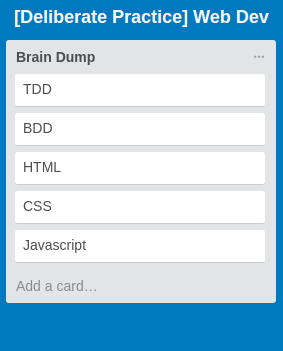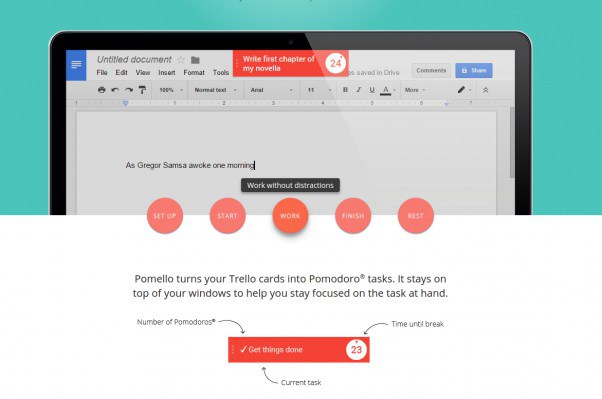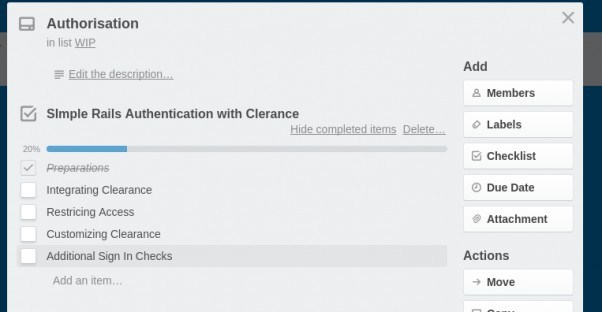
How do we apply deliberate practice to honing our craft in a simple way?
You can learn anything using the internet, I want to show you how you can master your craft at your own pace.
Why you care about Mastery
Whether you’re a musician, programmer, business person, architect or sportsman, we all want to become better or more skilled at what we do. I know you truly believe that and I believe that for myself and you. More importantly, I know you can do it, we all can.
Doing the same thing for 11 years makes you as skillful as the person with 1 year of experience ,repeated 10 times. I don’t want you to fall into this repetition trap.
So how do you go about?
With simply 25 minutes and a gamer’s mindset.
So why the gamer’s mindset? As a gamer, I love going on new adventures, getting involved in quests and saving the world. Apart from engaging in an adventure and solving problems, you are not afraid to fail. Game over is not the end, it’s just feedback letting you know you need to try a different tactic. You are nearly there.
Adopt the gamer’s mindset so that you are willing to try different things, in order to go to the next level.
25 minutes is 1 pomodoro and just enough time for you to focus, whether you want to practice in the evening or morning.
What is Deliberate practice
Deliberate practice is intentional learning to achieve rapid mastery. Simple isn’t it.
The focus of this post is to inspire action, however if you prefer a comprehensive explanation, check out James Clear’s Post here. (James Clear is a highly respected productivity expert.)
The results of Deliberate practice
After at least 2 rounds of 25 minutes you will realize the benefit of deliberate practice. You will understand how it contributes to rapid learning in a simple way.
Also, you will be able to hone your craft and find it easier to navigate complexity in a more natural way.
Also it is the exact same method used by pro basketball athletes and artists, namely Kobe Bryant, Picasso and Mozart
Example of how it is applied
Let’s demonstrate it with a baskeball analogy:
Consider the activity of two basketball players practicing free throws for one hour. Player A shoots 200 practice shots, Player B shoots 50. Player B retrieves his own shots, dribbles leisurely and takes several breaks to talk to friends. Player A has a colleague who retrieves the ball after each attempt. The colleague keeps a record of shots made. If the shot is missed the colleague records whether the miss was short, long, left or right and the shooter reviews the results after every 10 minutes of practice. To characterize their hour of practice as equal would hardly be accurate. Assuming this is typical of their practice routine and they are equally skilled at the start, which would you predict would be the better shooter after only 100 hours of practice?
—Aubrey Daniels
Both players can claim practicing for 1 hour but only 1 of them is practicing deliberately
Researchers have noted that top artists, musicians, CEOs and entrepreneurs in every industry are committed to deliberate practice. You don’t merely clock in the time, they work on developing specific skills.
Expertise is a process, not an outcome. “Elbow up.”
How you can apply it – Everyday.
For this guide, I am going to assume you are a maker and have only 25 minutes to practice.
I divided it into 2 sections being once off prep work and then the actual steps you take.
I will use Trello for this but you can use anything you prefer like pen and paper or mind maps.
[Pre- Practice]
Step 1: Brain – Dump
The first step is to choose the area of expertise you looking to improve on. For example. Web development, or graphic design, playing the piano. (I will refer to these as Topics)
Then write all the things you are interested in learning about the topic you chose. (I will refer to these as Focus Areas)
For example: [Topic] Web development using Ruby on Rails</p>
- [Focus Area] Authorisation
- [Focus Area] TDD/BDD
- [Focus Area] HTML / CSS
-
[Focus Area] Javascript [Topic]Graphics design</p>
- [Focus Area] Photoshop/sketch
- [Focus Area] UI Interface design
-
[Focus Area] UX [Topic] Playing the piano</p>
- [Focus Area] Chords
- [Focus Area] Sight Reading
- [Focus Area] Playing by ear

Pro tip: For those using Trello – The Topics should be a separate board
Step 2: Start with your Burning Pain
The next step is to choose a focus area which you been excited to explore. I like choosing the one that I am completely fascinated with and lose all sense of time exploring. For this
For this example, I will be exploring Authorisation in Ruby on Rails.

Move your chosen Focus Area to the To-Do section
Step 3: Find a tutorial/how-to guide for your chosen Focus area.
There are always tons of tutorials online on any topic you want to learn. So simply googling will yield more than enough results.
While you’re skimming and checking out a tutorial on your focus area, you will notice new, interesting phrases and concepts. Whether they are linked to your focus area or not, you should add them to your Brain Dump list for future exploration.
Try and limit your finding of a tutorial to max. 30 minutes. This includes quickly skimming through it. I don’t want you to fall into analysis paralysis or for you to fall in love with googling and never practice.
I found this after 5 minutes and will be using it for this tutorial.
- Things to look out for in a good tutorial:
- How recent is the tutorial?
- Is it from a reputable site?
- Are there any Social Shares?
- Is it broken into manageable steps?
- Does it achieve my goal?

Step 4: Break the tutorial into steps
Skim the tutorial and identify the pattern of how it is broken up. The headers are good dividers and helps you identify sections of the tutorial.
In my tutorial, it can be easily divided using the section header. I then wrote out these headings into Trello. Each heading is a To- do item.

Pro tip : Use the name of the tutorial as the name of the To-Do list. This will help you later if you plan to do multiple tutorials on 1 focus area
Step 5: Schedule each step in your calendar
Using each of the to-do items, schedule when you’re going to work on your tutorial. You can use any calendaring app for this. Just make sure it is the calendar you check often and set reminders for the next day and 1 hour before.
[Practice]
Step 6: Set a 25 minute timer and do 1 step
Now it’s time to practice! – Are you excited because I am.
So set your timer for 25 minutes or 1 pomodoro – I use a Trello Chrome extension called Pomello for this – which is simple and works well.

Identify the section of the tutorial you scheduled for today, start your timer.

Move the Focus Area card into the WIP section and Do what you set out to do.
Step 7: Review
25 mins done? How did it go?
If you could not complete the section in the 25 minutes – That’s okay, it happens. You will become better at estimating what you can achieve in 25 minutes with a little practice.
Make a note to yourself about what happened and what you can do in the future to make sure you finish your task. That could do this by reducing the size of the task, defining the objective more clearly or doing some prep work first.
In Trello, I make notes to myself by writing a comment. I tend to put the todo item in square brackets for easy reference. Refer to the screenshot below to see how I do it.

Remember: You will become better at knowing what you can achieve in 25 minutes of focus.
If you, finished the task before the 25 minute mark, tick the todo item off and move on to the next task. Try to stay in the flow while the timer is going. This is called “Riding the Motivation Wave”.
Give yourself a rating
Give yourself a rating from 1 (Noob) – 5 (Master) on that task and write a note to yourself on your experience of that task. This can include what you need to improve on, or something that you discovered.
If you’re happy with your rating and completely comfortable with the task, add to your list how you can achieve the same task by changing the structure, order or going a different route altogether. (This is important)
For example: During this tutorial I discovered that I need to work on better understanding sessions – so I added sessions to my Brain-Dump list to work on later. Also there was a few sections that I did not fully understand – so I scheduled to repeat that section.

If you’re completely happy with this task after you reviewed your experience – Mark this todo item as completed.

The Review section is used when you completed all your todo items and need to review your focus area as a whole

Step 8: Celebrate
You completed your to-do item and you made notes on your experience. Now it’s time to celebrate. So go out and do an activity you enjoy or eat something you love. You deserve it.
Pro-Tip: This may seem cheezy but it’s deeply rooted in scientific evidence to help establish positive reinforcement into your practice, to build a lasting habit.
Step 9: Repeat
Before you repeat steps 5-8, refer to the notes you made on this tutorial.
Make sure that you added anything from your notes you want to improve on back into your Brain-Dump list.
There are 2 general repeat strategies you can use to improve your skill level.
-
You can repeat the task you did previously until you’re completely comfortable with it. Then, think of and performed the same task in multiple other ways to achieve the same result, before moving on to the next task.
-
You can do the whole tutorial and then come back and repeat individual tasks that you want to improve on.
This is completely up to you. I apply the second repeat strategy because it gives you context of the entire process and overall objective before diving deeper.
Once all items are completed – move the Focus area to Done.

You got this
So let me know what tutorial you applied deliberate practice to, and how it has helped you.
This tutorial was inspired by the work of thought leaders that have influenced my own work like:
Cal Newport – So good they can’t ignore you
Charles Duhigg – Author of Power of Habit
Further Reading
Deliberate practice – Patrick Gombery
Deliberate Practice – James Clear
Deliberate Practice to World Class Performance – Kenneth Grady
Deliberate Practice vs Practice – Joe Bunting
Creativity is more than 10, 000 hours – Scott Barry Kauffman




